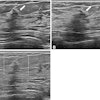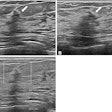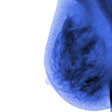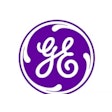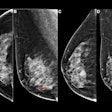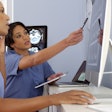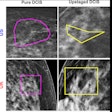Mobile mammography units come with many benefits for breast cancer screening, but also important challenges such as higher recall rates and delays in final diagnosis, according to research presented at the 2025 American Society of Clinical Oncology (ASCO) annual meeting in Chicago.
Researchers from the University of Pennsylvania found that a group of patients with BI-RADS 0 results from a mobile mammography unit had median time from screening mammography to diagnostic resolution that was more than twice as long as those at hospital-based sites.
"Although [a mobile mammography unit] offers an effective strategy to improve screening access, our study highlights opportunities for improved patient navigation, social work support, and financial assistance to promote more equitable follow-up of abnormal screening mammograms,” wrote researchers led by Carla Zeballos Torrez, MD, PhD, in their poster abstract.
In their study, the researchers sought to evaluate factors associated with site of screening, recall rates, and time to diagnostic resolution for mobile mammography units in comparison with their institution’s large, urban hospital sites. The study was conducted during overlapping two-week periods in 2022 and 2023 and included 516 patients in the mobile mammography unit cohort and 2,401 patients.
Of the mobile mammography unit cohort, more patients identified as Non-Hispanic Black (68% vs. 40%, p < 0.001), reported having no insurance (71% vs. 2.1%, p < 0.001), and had no primary care provider (35% vs. 9.8%, p < 0.001) in comparison with those receiving screening at hospital-based sites , according to the researchers. Furthermore, 70% were in the highest Area of Deprivation Index (ADI), an index of socioeconomic status for communities; 27% of those at hospital-based sites had that status.
Results in BI-RADS 0 patients by site of screening | ||
| Hospital-based sites | Mobile mammography unit |
Recall rate | 9.9% | 18.8% |
Cancer detection rate | 8.7 per 1,000 exams | 13.6 per 1,000 exams |
Median days to from screening mammography to diagnostic imaging | 11 | 28 |
Median days from diagnostic imaging to biopsy | 12 | 11 |
Median days to diagnostic resolution | 14 | 29 |
With the exception of median days from diagnostic imaging to biopsy (p = 0.5) and cancer detection rate (p = 0.32), all other differences were statistically significant (p < 0.01).
Among other findings, 18 (19%) of the patients at mobile mammography units had no follow-up, compared with 9 (3.8%) of hospital-based sites. And 58% of patients with ADI percentile over 80 reached diagnostic resolution in more than 60 days. This result was consistent across type of screening site, according to the researchers.
In other results, patients with no insurance were less likely than insured patients to have diagnostic resolution (hazard ratio = 0.43, p = 0.001).

